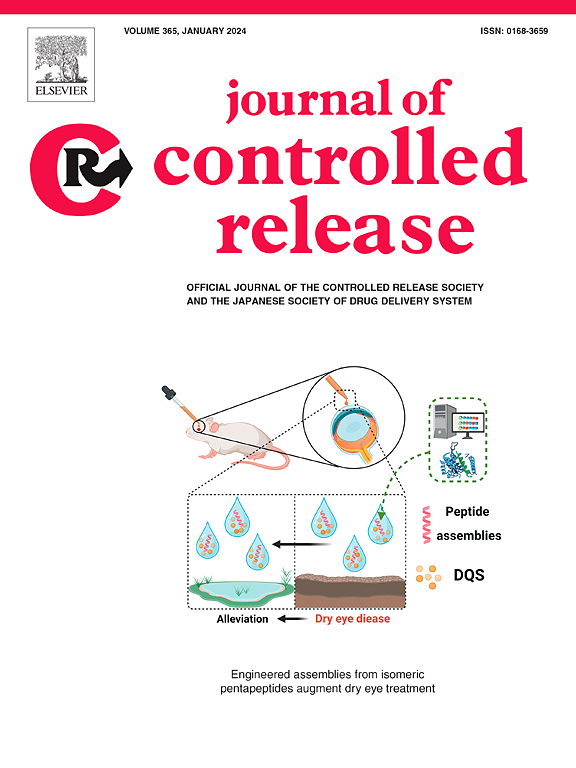Focused ultrasound augments the delivery and penetration of model therapeutics into cerebral cavernous malformations
IF 10.5
1区 医学
Q1 CHEMISTRY, MULTIDISCIPLINARY
引用次数: 0
Abstract
Cerebral cavernous malformations (CCMs) are vascular neoplasms in the brain that can cause debilitating symptoms. Current treatments pose significant risks to some patients, motivating the development of new nonsurgical options. We recently discovered that focused ultrasound-microbubble treatment (FUS) arrests CCM formation and growth. Here, we build on this discovery and assess the ability of FUS to deliver model therapeutics into CCMs. T1 mapping MRI was used with 1 kDa (MultiHance; MH) and 17 kDa (GadoSpin D; GDS) contrast agents to assess the FUS-mediated delivery and penetration of model small molecule drugs and biologics, respectively, into CCMs of Krit1 mutant mice. FUS elevated MH delivery rate in lesion cores (4.6-fold) and perilesional spaces (6.7-fold). For the model biologic (i.e. GDS), FUS was of greater relative benefit, resulting in 21.7-fold and 3.8-fold delivery increases to the intralesional and perilesional spaces, respectively. These findings indicate that FUS can serve as a powerful non-invasive platform for augmenting therapeutic delivery to CCM.

聚焦超声增强了脑海绵畸形模型治疗的传递和渗透
脑海绵状血管瘤(CCMs)是大脑中的血管肿瘤,可引起衰弱症状。目前的治疗方法对一些患者构成重大风险,促使新的非手术选择的发展。我们最近发现聚焦超声微泡治疗(FUS)可以阻止CCM的形成和生长。在此,我们以这一发现为基础,评估FUS向CCMs输送模型疗法的能力。T1定位MRI使用1 kDa (MultiHance;MH)和17 kDa (GadoSpin D;GDS)对比剂分别评估fus介导的模型小分子药物和生物制剂在Krit1突变小鼠CCMs中的传递和渗透。FUS提高了病灶核心(4.6倍)和病灶周围间隙(6.7倍)的MH传递率。对于模型生物(即GDS), FUS具有更大的相对益处,导致向病灶内和病灶周围空间的递送分别增加21.7倍和3.8倍。这些发现表明,FUS可以作为一个强大的非侵入性平台,以增加对CCM的治疗。
本文章由计算机程序翻译,如有差异,请以英文原文为准。
求助全文
约1分钟内获得全文
求助全文
来源期刊

Journal of Controlled Release
医学-化学综合
CiteScore
18.50
自引率
5.60%
发文量
700
审稿时长
39 days
期刊介绍:
The Journal of Controlled Release (JCR) proudly serves as the Official Journal of the Controlled Release Society and the Japan Society of Drug Delivery System.
Dedicated to the broad field of delivery science and technology, JCR publishes high-quality research articles covering drug delivery systems and all facets of formulations. This includes the physicochemical and biological properties of drugs, design and characterization of dosage forms, release mechanisms, in vivo testing, and formulation research and development across pharmaceutical, diagnostic, agricultural, environmental, cosmetic, and food industries.
Priority is given to manuscripts that contribute to the fundamental understanding of principles or demonstrate the advantages of novel technologies in terms of safety and efficacy over current clinical standards. JCR strives to be a leading platform for advancements in delivery science and technology.
 求助内容:
求助内容: 应助结果提醒方式:
应助结果提醒方式:


